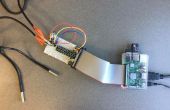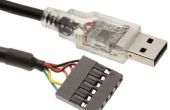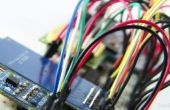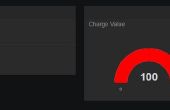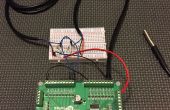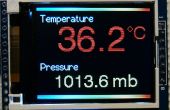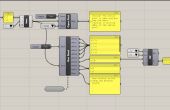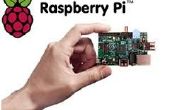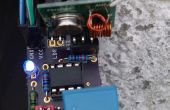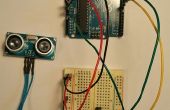Paso 2: El código
El programa. Como instructables no es grande en el código de publicación, sugiero para utilizar el archivo que he añadido
// The full development history of this code is in the attached file #include <EtherCard.h> // if this library disappeared, it is EtherCard.h #include <Wire.h> // it is Wire.h #include <Adafruit_BMP085.h> // it is Adafruit_BMP085.h #include <dht11.h> // it is dht11.h #define DHT11PIN 2 Adafruit_BMP085 bmp; dht11 DHT11; #define APIKEY "QTRR4654FRE3" // put your key here #define ethCSpin 10 // put your CS/SS pin here. // ethernet interface mac address, must be unique on the LAN static byte mymac[] = { 0x75,0x68,0x68,0x68,0x68,0x68 }; const char website[] PROGMEM = "api.thingspeak.com"; byte Ethernet::buffer[700]; uint32_t timer; Stash stash; byte session; //timing variable int res = 100; // was 0 void setup () { Serial.begin(9600); Serial.println("\n[ThingSpeak example]"); //Initialize Ethernet initialize_ethernet(); } void loop () { //------DHT11-------- int chk = DHT11.read(DHT11PIN); int t=(DHT11.temperature); int h=(DHT11.humidity); //-----BMP180----------- bmp.begin(); float p=(bmp.readPressure()/100.0);//this is for pressure in hectoPascal float m=(bmp.readPressure()/133.3);// this is for pressure in mmHG float t2=(bmp.readTemperature()); //------ENC28J60---------- //if correct answer is not received then re-initialize ethernet module if (res > 220){ initialize_ethernet(); } res = res + 1; ether.packetLoop(ether.packetReceive()); //200 res = 10 seconds (50ms each res) if (res == 200) { // field1=(Field 1 Data)&field2=(Field 2 Data)&field3=(Field 3 Data)&field4=(Field 4 Data)&field5=(Field 5 Data)&field6=(Field 6 Data)&field7=(Field 7 Data)&field8=(Field 8 Data)&lat=(Latitude in Decimal Degrees)&long=(Longitude in Decimal Degrees)&elevation=(Elevation in meters)&status=(140 Character Message) byte sd = stash.create(); stash.print("field1="); stash.print(t); stash.print("&field2="); stash.print(h); stash.print("&field3="); stash.print(p); stash.print("&field4="); stash.print(t2); stash.print("&field5="); stash.print(t); stash.print("&field6="); stash.print(h); stash.print("&field7="); stash.print(p); stash.print("&field8="); stash.print(t2); stash.save(); // generate the header with payload - note that the stash size is used, // and that a "stash descriptor" is passed in as argument using "$H" Stash::prepare(PSTR("POST /update HTTP/1.0" "\r\n" "Host: $F" "\r\n" "Connection: close" "\r\n" "X-THINGSPEAKAPIKEY: $F" "\r\n" "Content-Type: application/x-www-form-urlencoded" "\r\n" "Content-Length: $D" "\r\n" "\r\n" "$H"), website, PSTR(APIKEY), stash.size(), sd); // send the packet - this also releases all stash buffers once done session = ether.tcpSend(); // added from: http://jeelabs.net/boards/7/topics/2241 int freeCount = stash.freeCount(); if (freeCount <= 3) { Stash::initMap(56); } } const char* reply = ether.tcpReply(session); if (reply != 0) { res = 0; // Serial.println(F(" >>>REPLY recieved....")); // Serial.println(reply); } delay(300); } void initialize_ethernet(void){ for(;;){ // keep trying until you succeed //Reinitialize ethernet module //Serial.println("Reseting Ethernet..."); //digitalWrite(5, LOW); //delay(1000); //digitalWrite(5, HIGH); //delay(500); if (ether.begin(sizeof Ethernet::buffer, mymac, ethCSpin) == 0){ Serial.println( F("Failed to access Ethernet controller")); continue; } if (!ether.dhcpSetup()){ Serial.println(F("DHCP failed")); continue; } ether.printIp("IP: ", ether.myip); ether.printIp("GW: ", ether.gwip); ether.printIp("DNS: ", ether.dnsip); if (!ether.dnsLookup(website)) Serial.println(F("DNS failed")); ether.printIp("SRV: ", ether.hisip); //reset init value res = 180; break; } } ----------------

